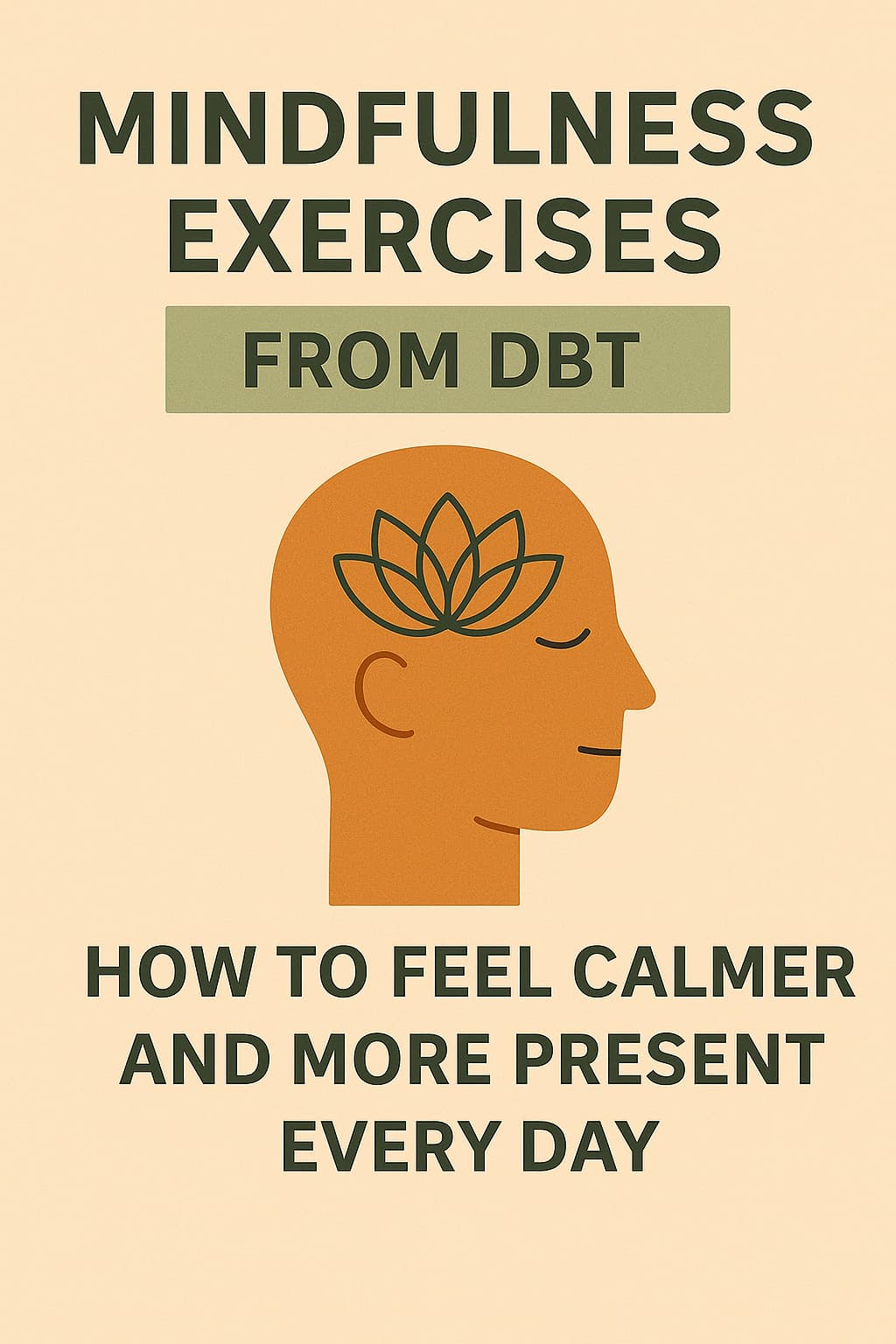If you've ever felt emotionally overwhelmed and unsure how to ground yourself, you're not alone. DBT (Dialectical Behavior Therapy) was developed to help people cope with intense emotions — and mindfulness is one of its most powerful tools.
In this post, you’ll learn simple, beginner-friendly DBT mindfulness exercises that can help you feel more present, less reactive, and more in control.
What Is DBT Mindfulness?
DBT, created by psychologist Marsha Linehan, is a type of therapy often used to treat emotional dysregulation, anxiety, and mood swings. One of its key components is mindfulness, which teaches you to:
- Slow down
- Notice what you’re thinking and feeling
- Respond intentionally — not react automatically
These mindfulness skills are practical, gentle, and surprisingly effective.
The Core DBT Mindfulness Skills
The “What” Skills: What you do
- Observe: Notice your thoughts, sensations, or emotions
- Describe: Put words to what you observe
- Participate: Fully engage with what’s happening now
The “How” Skills: How you do it
- Non-judgmentally: Notice without labeling something as good or bad
- One-mindfully: Focus on one thing at a time
- Effectively: Do what works in the moment
These may sound abstract at first — but when practiced regularly, they become grounding tools in daily life.
3 DBT-Inspired Mindfulness Exercises to Try
1. 5-4-3-2-1 Grounding (Observe Skill)
Use your five senses to bring yourself into the moment:
- 5 things you can see
- 4 things you can feel
- 3 things you can hear
- 2 things you can smell
- 1 thing you can taste
This is a go-to for anxiety or panic.
2. Name It to Tame It (Describe Skill)
When emotions hit hard, say what you’re feeling out loud (or in your mind):
"This is frustration."
"This is sadness."
Labeling emotions reduces their intensity and helps create space to respond instead of react.
3. One-Mindful Routine
Choose one daily habit — brushing your teeth, drinking tea — and do it with full awareness:
- Notice each movement
- Focus on each sensation
- Bring your attention back gently when it drifts
This builds focus and presence without needing to meditate.
Final Thoughts
You don’t have to be in therapy to benefit from DBT’s mindfulness tools. Whether you’re dealing with daily stress, big emotions, or just want to feel more grounded, these exercises are a simple place to start.
Try one today — and notice how even a few mindful moments can change the tone of your day.
Explore more mindfulness routines:
→ [See our breathing exercises for stress relief]
→ [Try our 5-minute morning clarity routine]
Mini FAQ
Q: What are DBT mindfulness exercises used for?
A: DBT mindfulness exercises help people become more aware of their thoughts and emotions, so they can respond calmly and effectively instead of reacting impulsively.
Q: Can I practice DBT mindfulness without a therapist?
A: Yes. While DBT is a therapy model, its mindfulness techniques can be practiced by anyone. They’re simple, practical, and work well as part of a self-care routine.
Q: How long do DBT mindfulness exercises take?
A: Many DBT mindfulness practices, like grounding or breath awareness, take just a few minutes. You can build them into your daily life without needing a full meditation session.

